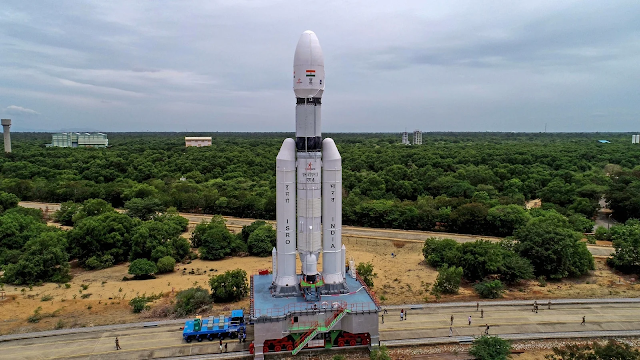Exploring the Mysteries of the Moon: Discoveries from Chandrayaan-3 Mission
The moon, our celestial neighbor, has always captivated human imagination and curiosity. Over the years, various space missions have been launched to unravel the secrets hidden within its barren yet mesmerizing landscape. India's Chandrayaan-3 mission stands as a significant milestone in lunar exploration, bringing forth new findings that contribute to our understanding of the moon's geological history, potential resources, and its significance for future space endeavors.
A Brief Overview of Chandrayaan-3:
Chandrayaan-3, the third lunar mission by the Indian Space Research Organisation (ISRO), was launched with the primary goal of furthering our knowledge about the moon. Building on the success of Chandrayaan-2, this mission was designed to explore specific regions of interest and expand our understanding of the moon's surface composition, topography, and mineral resources.
Key Findings:
*1. Lunar Surface Composition: One of the major achievements of Chandrayaan-3 was its detailed analysis of the moon's surface composition. By utilizing advanced spectroscopic instruments and imaging technologies, scientists were able to identify a more diverse range of minerals and elements than previously known. This information is invaluable for deciphering the moon's geological history and its relationship with Earth.
*2. Volcanic Activity: The mission shed light on the moon's volcanic past, revealing evidence of ancient volcanic activity in certain regions. The identification of lava flows, volcanic domes, and other geological features pointed towards a history of intense volcanic eruptions. This insight into lunar volcanism provides clues about the moon's early thermal evolution and its potential implications for similar processes on other planetary bodies.
*3. Water Ice Deposits: One of the most exciting revelations from Chandrayaan-3 was the discovery of substantial water ice deposits in certain permanently shadowed regions of the moon. These regions, hidden from direct sunlight, offer a unique environment where water molecules are thought to have accumulated over billions of years. The presence of water ice is of paramount importance for future lunar exploration and potential colonization efforts, as water can be converted into oxygen and hydrogen for life support systems and rocket fuel.
*5. Lunar Regolith Properties: The lunar regolith, the layer of loose soil and fragmented rock covering the moon's surface, was a focal point of study for Chandrayaan-3. The mission's instruments analyzed the regolith's mechanical properties, helping scientists understand its density, porosity, and potential for various engineering applications. This information is crucial for designing structures and technologies for future lunar missions. Future Implications: The findings from Chandrayaan-3 have far-reaching implications for both lunar science and future exploration endeavors. The discovery of water ice in shadowed regions opens up the possibility of establishing sustainable lunar habitats and utilizing local resources for space missions. The insights into lunar volcanism and impact history provide crucial context for understanding the moon's geological evolution and its place in the solar system.
Additionally, Chandrayaan-3's technological advancements in spectroscopy, imaging, and surface analysis techniques can be applied to other planetary bodies, enhancing our understanding of the broader universe. In conclusion, Chandrayaan-3 has undoubtedly expanded our understanding of the moon's geology, history, and resource potential. Its groundbreaking findings pave the way for further exploration, inspire new generations of scientists and engineers, and set the stage for humanity's future endeavors beyond our home planet. As we continue to explore the cosmos, the mysteries of the moon serve as a reminder of the boundless wonders awaiting our discovery.




Comments
Post a Comment